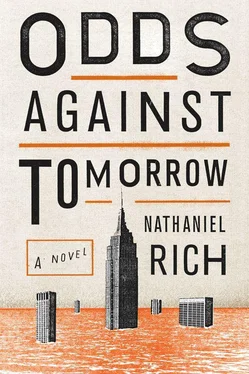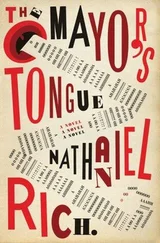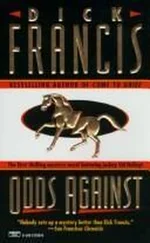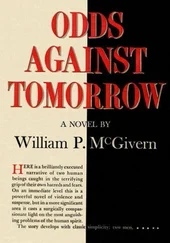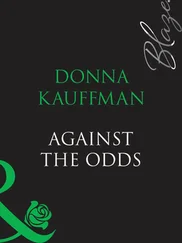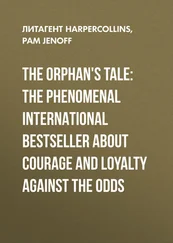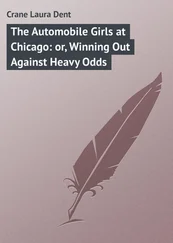But there was more to it than that. Unlike Charnoble, he was not a cynic. Wouldn’t these consultations perform a valuable service for his clients, apart from indemnification? He would force them to look out the windows of their skyscrapers and see what was going on. Inside the glass towers it was the twenty-first century — fiber optics, silent supercomputers, temperature control to the tenth of a degree Fahrenheit. But just outside, where the thermostat was wildly out of control, it was still the Dark Ages: pantomiming prophets, barefoot beggars, plague and pestilence.
“I know more about the actual world than most people,” he wrote to Elsa on FutureWorld stationery, his pen chiseling deep indentations into the page. It was impressive stationery — a significant improvement on Fitzsimmons Sherman’s thin-grade, laser-printed stock. The paper was a cotton and hardwood blend, with deckle edges, the open window logo embossed in magenta dye at the head and, in the center of the page, a faint “FW” watermark, visible only when you held it up to natural light. It said FW, but it communicated Brumley Sansome.
“It’s curiosity that’s my problem,” Mitchell continued. “I wish I didn’t want to know the first thing about plate tectonics or nuclear war, but I do. So I learn more. And the more I learn, the more I find there is to fear.”
In the following weeks, as July collapsed into August, letters began to arrive nearly every day. Neither of them waited for responses before sending a new one. So several dialogues were conducted simultaneously. But the conversation, in a certain sense, remained the same. They both had information that the other craved.
Mitchell asked questions about Ticonderoga in the hope that Elsa would explain why she had decided to risk her life for the privilege of living on an isolated farm like an Okie homesteader. But she didn’t disclose her secret. Instead she sent news of solar tubes, bidirectional net meters, and metal flashings; lists of crops and the seasons in which they would be planted; and long-range plans — they were replacing the tennis courts with gardens, repairing the pump in the artesian well, insulating the administrative buildings for use during the winter months. It soon became clear that it wasn’t only a change of scenery she was after, or a desire to get closer to nature. No, Elsa had higher ambitions. She said she wanted to develop an entirely new way of living. “Rationality has made a mess of this world. Rationality isn’t helpful or useful, and it’s certainly not exciting. We want to trust our impulses more.” But what were those impulses? What were they telling her to do? Were they like the voices telling Marshall Applewhite that in order to ascend to the alien spaceship trailing the Hale-Bopp comet, he and his followers had to swallow applesauce spiked with phenobarbital?
In his own letters Mitchell made a point of listing the virtues of metropolitan life, primarily the attractions of total convenience: the way the city handled essential services such as food and waste with optimal efficiency, leaving you with more time to do, well, whatever was important to you. He tried to introduce her to some basic econometric principles — Markov systems in particular — that might help her make decisions more logically, but he encountered resistence. It didn’t matter; his point was simple: they had urban farms in Brooklyn and rooftop gardens all over Manhattan, if that’s what she wanted. He didn’t mention that the most idyllic moments of his childhood were spent floating, carefree, in a canoe across Little Elkhart Lake, where for three summers he attended a wilderness camp for boys. (At the age of eleven he left that for the Young Scholars mathematics camp at the University of Chicago.) Nor did he mention New York’s doctors, the hospitals, the world-class cardiologists — but he figured he didn’t have to. Wasn’t it clear what they were talking about?
This theme kept recurring, an undertow that threatened to tug them out to deeper waters. Elsa asked, for instance, why Mitchell kept plastic sandwich bags filled with cash hidden in his freezer.
“In case ATMs stop working. Say there’s a massive blackout. Or a bomb. Or an electromagnetic pulse radiation. Awfulness can happen at any time. That’s what’s so awful.”
These were the words they used, but what they were really after went unspoken. Mitchell wanted to know how she defeated, or ignored, the fear of a death that would likely come for her soon. And Elsa seemed eager to prove her case to him, to persuade him that she had figured out how best to survive a chaotic universe. But why? Why should she care what Mitchell — a financial consultant who plotted disaster and figured out how to profit from it — thought about her little utopian agricultural experiment?
He was thinking about this in his gigantic empty office on the second floor of the Empire State Building. The newest letter from Elsa Bruner lay on his desk beside a report from the World Health Organization titled “Dengue and Hemorrhagic Fever: An Emerging Public Health Threat in the United States,” a file containing new telemetric readings of unusual growth activity in the Yellowstone caldera, and an article from Nature titled “Recent Contributions of Glaciers and Ice Caps to Sea Level Rise.” It was astonishing how much bad news was generated every day. You had only to pay attention — subscribe to the right newsletters and academic journals — and you could see the information accrete, like matter spiraling around a black hole.
The newest letter from Elsa had little to it — she complained about the unusually pungent and penetrating heat that had smothered the Northeast all summer. The depth of the Housatonic River in Connecticut was at a thirty-year low, and there had been a pageant of spontaneous fires through central New Jersey, spreading from house to house, jumping over distances as long as a basketball court. The same signs, she wrote, were evident at Ticonderoga. The well was drying up; the fields were turning to dust; the evergreens were brown. But what struck Mitchell about Elsa’s note was a throwaway line right at the end, set off from the rest. She had written:
“Is it odd that we read each other’s thoughts but never hear each other’s voices?”
This had stuck with him, stuck in the folds of his brain like gum to the sole of a shoe. There was something here. He didn’t think she was proposing that they speak on the phone. That would be difficult, since she had no phone line or Internet connection at Ticonderoga and she drove into Augusta no more than once a week. But the intimacy of that line ( we read each other’s thoughts ) forced him again to wonder why she was writing him so enthusiastically. Was she merely lonesome? Bored? That didn’t seem right. She had endless work to do in the fields. And she had plenty of company — not just her boyfriend but the friends who bunked at the farm for weeks at a time, usually after their rock bands broke up.
But who, besides Mitchell, was willing to suggest to her, however timidly, that she was putting her life in danger? Not her comrades on the farm. The boyfriend, as far as Mitchell could tell, was doting and subservient, committed to her plans. Elsa’s father was dead, and her mother, a retired social worker on disability, was absent, a burnout in Boulder. Nobody would question her but Mitchell.
So maybe Elsa, deep down, didn’t want to hear his voice. The distance sanitized the conversation, gave it an academic quality — a correspondence course in self-denial. The strangely antiquated act of exchanging letters allowed them a phony sense of detachment. It would be considerably more difficult to have to respond to a live person, ready with spontaneous retorts. When you looked at it this way, her letter-writing mania began to make more sense. She wasn’t trying to persuade Mitchell Zukor that she was doing the right thing with her life. She was trying to persuade herself . She had asked whether excessive fear could insulate you from the actual world. Perhaps Mitchell’s letters were as much of the actual world as she could tolerate.
Читать дальше
